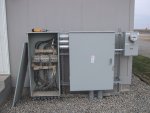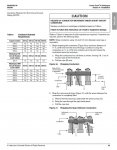mikesimpson5
Member
- Location
- Atlantic County, NJ USA
Is anyone familiar with roped conductors and how they can increase the short circuit/withstand rating of equipment? I have a tap box rated 10k but if the conductors are "roped", the rating increases to 65k.




